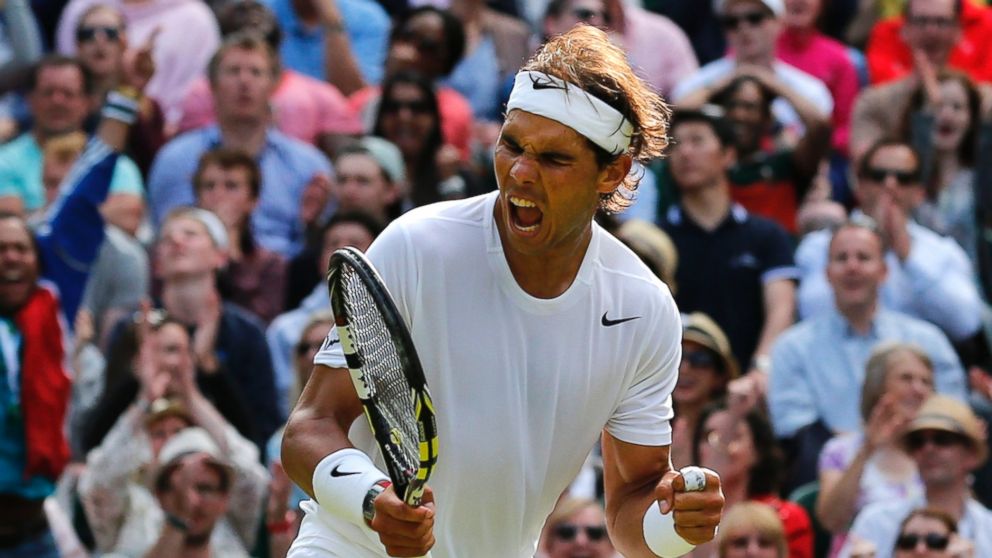Wimbledon Toilet Breaks: Got to Go or a Ruse?
Tennis watchers say it's a way to win.

— -- With the men’s tennis semifinals in full swing at Wimbledon earlier today, some contentious eyes might have been focused on the controversial bathroom break.
Do top players like Roger Federer and Rafael Nadal really need to pee that often?
The New York Times describes one scenario that has drawn attention: Rafael Nadal was losing the first set against Mikhail Kukushkin when, after a bathroom break, he won the next three sets.
"I needed to go to the bathroom; that’s all,” said Nadal, according to the Times. “I bring my T-shirt and my bandanna to change that there because I had to go to the bathroom. Not because I wanted to have a break, no.”
Roger Federer back in a familiar spot
Bryan Brothers Back in Doubles Final at Wimbledon
Teen Who Beat Nadal at Wimbledon out Next Week
Many observers of the sport, including commentator and former Wimbledon champ John McEnroe, say these bathroom breaks are on the rise, according to the New York Times.
According to the Grand Slam tournament rule book: “A player is allowed to request permission to leave the court for a reasonable time for a toilet break/change of attire break (women’s events). Toilet breaks should be taken on a set break and can be used for no other purpose.”
Women can take two such breaks during a three-set match and for men, three are allowed during the five-set match.
The duration of a tennis match is often more than an hour and in some cases more than five hours, according to a study on the intensity of the game in the British Journal of Sports Medicine.
Does that intensity require toileting?
“It’s my thinking that two breaks are way too many – they are pushing this,” said Dr. Michael Norcross, an avid tennis player and a medical scientist for the Food and Drug Administration. “There’s no way you need to pee that much unless you have a bladder infection.”
“When you play tennis, you kind of dry up,” he told ABC News. “It’s rare you have to go. You are sweating your liquids. Your metabolism sucks up the water.”
“In general, you don’t drink too much water, and if you have to have a bowel movement – you should have done that earlier,” said Norcross, 64, who lives in Bethesda, Md., and has played the game since his youth. “When I go to the U.S. Open, I don’t recall seeing anyone taking bathroom breaks in the early-round matches.”
The normal range for an adult urinary output is about one to two quarts, according to the National Kidney Foundation. Many factors can influence urination, including the amount of liquid consumed, perspiration and use of diuretics like coffee and alcohol.
“If you consume a lot of water or sports drinks during exercise, your body will process these liquids and produce urine at a rapid rate,” says the website for LiveStrong, the foundation created by cycling competitor Lance Armstrong.
“The metabolic boost you experience during periods of exercise hastens the need to urinate afterward, so you may find that a reduction of fluid intake is all you need to diminish the urgency with which you urinate after exercise.”




